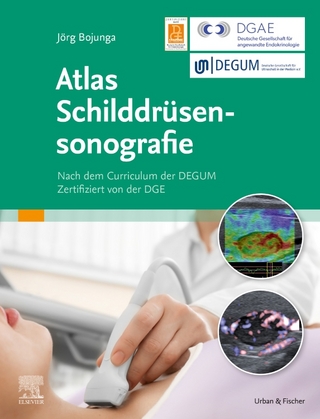
Insulin Resistance
Wiley-Blackwell (Verlag)
978-0-632-05662-0 (ISBN)
Insulin resistance, defined as a reduced biological action of insulin, has emerged as a major factor in the development and progression of a number of common non-communicable diseases in man. The role of insulin resistance in the aetiology of type 2 diabetes is particularly well-established. However, insulin resistance has also come to be regarded as a key component of a broader syndrome of common metabolic defects that conspire to increase the risk of atherosclerotic coronary heart disease. The ramifications of insulin resistance now embrace many different medical specialties.
The objective of this book is to summarize the current state of knowledge about insulin resistance. Section 1 (Pathophysiology of Insulin Resistance) considers the development of current concepts of insulin resistance. This is followed by a critical review of techniques for the assessment of insulin action in humans. The section concludes with an outline of current hypotheses concerning the molecular defects responsible for insulin resistance. Section 2 (Insulin Resistance in Clinical Medicine) broadens the discussion to include physiological and pathological conditions with which insulin resistance is associated; the effects of drug treatment on insulin sensitivity are also considered. Section 3 (Management of Insulin Resistance and Associated Conditions) focuses on the avoidance and treatment of insulin resistance in its clinical manifestations. A discussion of the potential benefits of non-pharmacological measures prefaces a review of the range of drugs used in the treatment of type 2 diabetes and related disorders. References are confined to key articles at the end of each section.
Improved nutrition allied to increased levels of physical exercise are of crucial importance in the battle to stem the increasing incidence and prevalence of insulin resistance; however, translation of such advice into action has proved difficult in practice. Thus, other approaches have been explored. Recent years have witnessed considerable progress in the pharmacological management of insulin resistance. In particular, the thiazolidinediones (and other insulin-sensitizing drugs) appear to provide a more specific assault on insulin-resistance. Clinical experience with these agents remains relatively limited and serious hepatotoxicity has clouded the first agent in this class - troglitazone. With its introduction into the USA in 1995 and driven by the publication of the United Kingdom Prospective Diabetes Study, metformin has enjoyed a renaissance. This well-established agent is finding application for new clinical indications. In parallel, the development of anti-obesity drugs continues apace.
The molecular and genetic mechanisms underlying some forms of insulin resistance are being revealed.
Original intellectual concepts such as the fetal origins hypothesis are challenging traditional views about the aetiology of insulin resistance and its clinical sequelae. These exciting scientific advances notwithstanding, the evolving global epidemic of obesity and type 2 diabetes represents an enormous public health challenge. Now more than ever, research must focus on identifying solutions that are applicable on the level of entire populations. By definition, these must also be practical and cost-effective.
Andrew J. Krentz, Lead Consultant in Diabetes and Endocrinology Southampton University Hospitals NHS Trust Southampton UK.
Section 1. Pathophysiology of insulin resistance. .
1.1 Introduction.
1.2 Normal physiology.
1.2.1 Hormonal regulation of metabolism.
.
1.2.2 The insulin receptor.
1.2.3 Post-binding events.
1.2.4 Glucose metabolism.
.
1.2.5 Lipid metabolism.
.
1.2.6. Protein metabolism.
1.2.7. Ion transport.
.
1.3 The concept of insulin resistance.
1.3.1 Early studies of insulin action.
1.4 Definitions of insulin resistance.
1.5 Assessment of insulin action in vivo.
1.5.1 Fasting insulin concentration.
1.5.2 Dynamic tests - endogenous insulin.
1.5.3 Dynamic tests - exogenous insulin.
1.5.4 Mathematical modelling techniques.
1.5.5 The insulin suppression test.
1.5.6 The hyperinsulinaemic euglycaemic clamp technique.
1.6. Mechanisms of insulin resistance.
.
1.6.1 Genetic causes of insulin resistance.
.
1.6.2 Acquired causes of insulin resistance.
.
1.6.3.Fetal origins hypothesis.
.
Further Reading.
.
Section 2. Insulin resistance in clinical medicine.
2.1 Clinical features.
.
2.2 Factors influencing insulin sensitivity.
.
2.2.1 Normal variation in insulin action.
.
2.2.2 Sex.
2.2.3 Age.
.
2.2.4 Physical activity.
.
2.2.5 Tobacco.
.
2.2.6 Alcohol.
.
2.3. Physiological states of insulin resistance.
2.3.1 Puberty.
.
2.3.2 Pregnancy.
2.3.4 The menopause.
.
2.4 Severe insulin resistance syndromes.
.
2.5 Insulin resistance and cardiovascular risk.
2.5.1 Syndrome X.
2.5.2 Obesity.
.
2.5.3 Regional adiposity.
.
2.5.4 Impaired glucose tolerance.
.
2.5.5 Type 2 diabetes.
.
2.5.6 Essential hypertension.
2.5.7 Dyslipidaemia.
.
2.5.8 Endothelial dysfunction.
.
2.5.9 Microalbuminuria.
.
2.5.10. Hyperuricaemia.
.
2.5.11 Impaired Fibrinolysis.
2.5.12 Polycystic ovary syndrome.
.
2.5.13 Non-alcoholic steatohepatitis.
2.6 Other disorders associated with insulin resistance.
.
2.6.1 Counter-regulatory hormone secretion.
.
2.6.2 Endocrinopathies.
.
2.6.3 Chronic renal failure.
2.6.4 Cirrhosis.
.
2.6.5 Cardiac failure.
.
2.7 Miscellaneous inherited disorders.
2.8 Drug-induced insulin resistance.
Further Reading.
.
.
Section 3. Management of insulin resistance and associated conditions.
3.1 Non-pharmacological measures.
3.1.1 Medical nutrition therapy.
.
3.1.3 Alcohol.
.
3.1.4 Tobacco.
.
3.2 Drugs for type 2 diabetes.
.
3.2.1 Biguanides.
3.2.2 Thiazolidinediones.
.
3.2.3 Sulphonyulreas.
.
3.2.4 Repaglinide.
3.2.5 a-glucosidase inhibitors.
.
3.2.6 Insulin therapy.
.
3.3 Anti-obesity drugs.
.
3.4 Lipid-modifying drugs.
.
3.5 Anti-hypertensive drugs.
3.6 Experimental therapies
| Erscheint lt. Verlag | 12.7.2002 |
|---|---|
| Verlagsort | Hoboken |
| Sprache | englisch |
| Maße | 140 x 216 mm |
| Gewicht | 318 g |
| Themenwelt | Medizinische Fachgebiete ► Innere Medizin ► Endokrinologie |
| ISBN-10 | 0-632-05662-2 / 0632056622 |
| ISBN-13 | 978-0-632-05662-0 / 9780632056620 |
| Zustand | Neuware |
| Haben Sie eine Frage zum Produkt? |
aus dem Bereich


